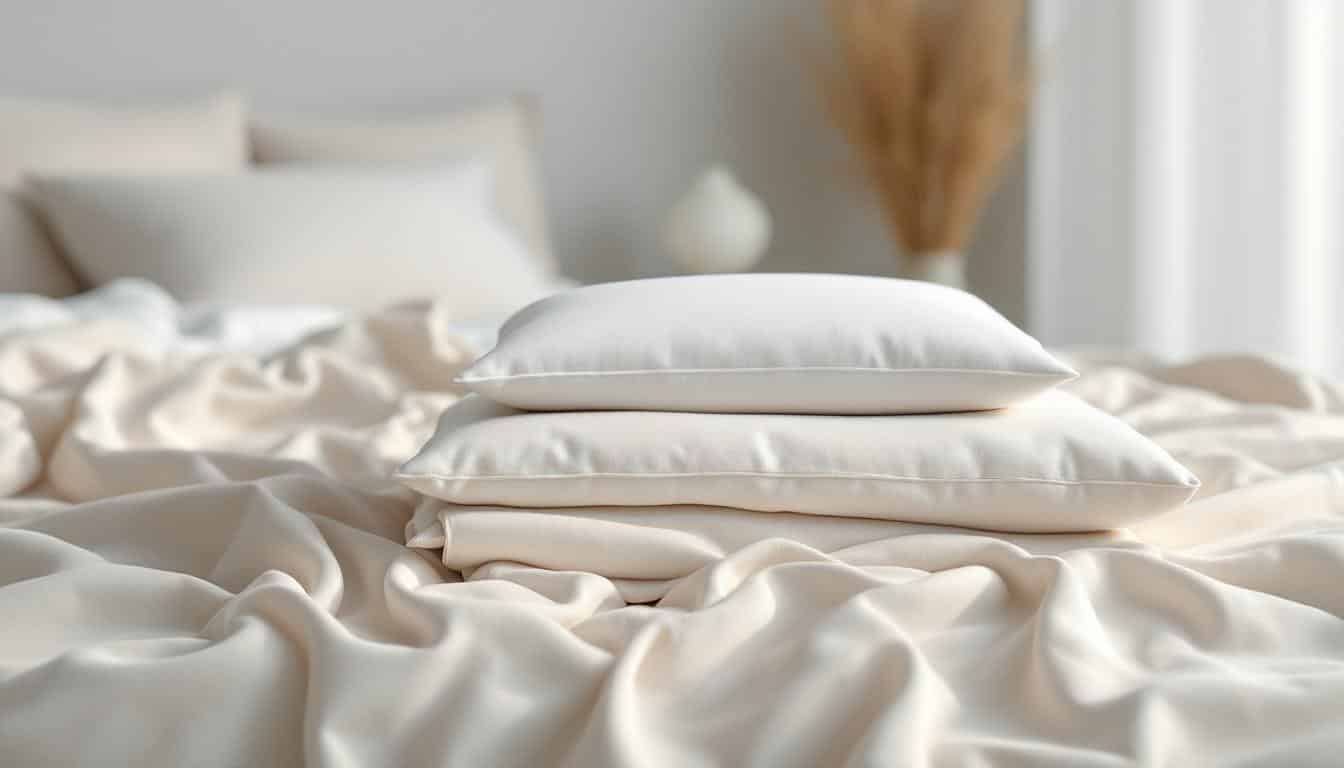In a fast-paced world filled with stimuli, our quest for a peaceful slumber has never been more crucial. As technology continues to evolve, digital sound environments are emerging as powerful tools to enhance our sleep experience. These soundscapes can range from gentle white noise to the harmonious music of nature, crafted to create an auditory backdrop that gently lulls us into restful sleep. Understanding the impact of these digital sounds on our sleep patterns opens up exciting possibilities for improving our nightly rest.
Recent research has revealed that the sounds we are exposed to during the night play a significant role in determining sleep quality. Each auditory element interacts with our brain in unique ways—some sounds may promote relaxation, while others can disrupt our slumber. By exploring the science behind these digital sound environments, we can better grasp how they influence our sleep hygiene. From the calming hum of to the rhythmic melodies of soft music, these auditory experiences hold the potential to transform our nights. As we dive deeper into this captivating realm, we uncover insights that could greatly enhance our overall health and quality of life.

As our lives become increasingly intertwined with technology, the concept of digital sound environments has emerged as a pivotal aspect in understanding how we interact with sound in our daily lives, especially concerning sleep quality. In this digital age, the sounds that surround us—ranging from ambient soundscapes to crafted sleep playlists—play a crucial role in influencing our sleep patterns. By examining recent studies and delving into practical strategies, we can gain insight into how these digital sound environments affect our rest.
Table of Contents
ToggleThe Science Behind Sound and Sleep
Understanding the relationship between sound and sleep begins with the brain’s response to auditory stimuli. Sound plays an integral role in our ability to transition through different sleep stages. Studies have indicated that ambient sounds—both natural and artificial—can influence our journey through light sleep, deep sleep, and REM sleep (Rapid Eye Movement sleep), each critical for restorative health.
According to a study conducted by Campfield et al. (2007), findings suggest that consistent and low-frequency sounds can assist in reducing the time taken to fall asleep. This is often attributed to the concept of sound masking, wherein a steady sound creates a uniform auditory environment, thereby minimizing the impact of disruptive noises such as traffic or domestic clamor (Campfield, S., et al. 2007, PubMed). The application of sound masking can consist of continuous ambient sounds like white noise, pink noise, or even sounds of nature, all curated to foster relaxation and facilitate deep sleep.
Furthermore, research indicates that patients in urban environments, where higher noise disturbances are prevalent, have significantly reduced sleep quality. For example, a survey conducted by the World Health Organization (WHO) in 2020 underscored that 40% of respondents reported experiencing sleep disturbances attributed to noise pollution (WHO, 2020). This highlights the importance of thoughtfully designed digital sound environments to combat the adverse effects of urban noise exposure.
Innovative Techniques for Enhancing Sleep with Digital Sound
With the proliferation of technology, various applications and devices have emerged to improve sleep via tailored soundscapes. Technologies such as smart speakers, sleep sound machines, and specialized apps allow users to curate their sound environments. Several innovative techniques have proven beneficial in enhancing sleep quality:
1. Tailored Soundtracks: Creating personalized playlists of soothing music or nature sounds can significantly impact sleep quality. Research from Upper Longevity suggests that music with a slow tempo can lower heart rates and relax the body, increasing the likelihood of falling asleep.
2. Biofeedback Sound Applications: Some applications integrate biofeedback technology, monitoring physiological signals such as heart rate variability to provide feedback that helps users achieve a tranquil state conducive for sleep. These applications often utilize signals to adjust the soundscape dynamically in real-time.
3. Guided Meditation and Mindfulness Practices: Many sound apps feature guided meditations and mindfulness practices, which leverage a soothing auditory environment to foster relaxation and mitigate pre-sleep anxiety. A recent study indicated that participants who engaged in sleep-focused guided meditation reported an increased sense of calm (López, et al., Sleep Techniques).
4. Leveraging AI Technology: Advanced algorithms can customize soundscapes based on individual user preferences and sleep data. For instance, AI-driven applications can analyze user habits and recommend specific sounds or playlists designed to enhance their unique sleep patterns. Continuous refinement enhances the effectiveness of the sound environment tailored to individual needs.
Implementing these strategies can lead to more effective sleep experiences, resulting in improved overall health. A case study conducted in a corporate setting revealed that employees who utilized soundscapes reported a 40% reduction in average sleep onset time, demonstrating the impact of integrating tailored digital environments into their nocturnal routines.
Exploring the Future of Digital Sound Environments for Sleep
The future of digital sound environments in sleep quality enhancement appears promising. As research unfolds and technology advances, several captivating avenues are worth exploring:
1. Ambisonic Sound Technology: This immersive audio technology presents sound in three-dimensional space, creating an enveloping acoustic environment. Future apps may harness this technology to provide users with a more realistic and immersive auditory experience, simulating environments designed to optimize relaxation.
2. Personalized Adaptive Sound Algorithms: Utilizing machine learning to develop soundscapes that adapt to individual user patterns has the potential to revolutionize sleep. By analyzing user sleeping behaviors, these algorithms could create dynamic sound environments that shift in real-time, promoting gradual transitions through various sleep stages.
3. Research on Psychoacoustic Models: Expanding research into psychoacoustics—the study of sound perception in psychological processes—will likely lead to innovative sound design strategies. Understanding how different frequencies and waveforms affect sleep at a deeper level will help create bespoke soundscapes based on answering specific sleep-related challenges.
By harnessing these innovations and adapting our auditory environments, we can optimize our sleep experiences and improve our health and well-being. Drawing attention to digital sound environments is essential as we learn to navigate a world where technology predominantly shapes our daily lives.

FAQ: Digital Sound Environments and Their Effect on Sleep
Q: What are digital sound environments?
R: Digital sound environments refer to the audio settings created using technology, often incorporating sounds like white noise, nature sounds, or music to enhance the quality of sleep.
Q: How do these sound environments affect sleep quality?
R: They can significantly improve sleep quality by masking disruptive noises and creating a calming backdrop, helping individuals transition smoothly through sleep stages.
Q: What types of sounds are most effective for promoting sleep?
R: Sounds such as white noise, gentle nature sounds, and slow tempo music are often considered the most effective for promoting relaxation and enhancing sleep quality.
Q: Can digital sound environments help those with insomnia?
R: Yes, many people with insomnia find that the use of digital sound environments can aid in falling asleep faster and staying asleep longer by providing a consistent auditory environment.
Q: Is there a best volume level for sleep sounds?
R: The optimal volume level should be audible but not too loud to avoid causing hearing damage or disrupting the natural sleep cycle.
Q: Should I use a sound machine or an app for sleep sounds?
R: Both sound machines and mobile apps can be effective. The choice depends on personal preference, convenience, and the variety of sounds offered by each option.
Q: How can I make the most of digital sound environments for better sleep?
R: Experiment with various sound options, set timers for automatic shutoff, and create a routine that consistently incorporates the use of these sounds to signal bedtime.





